The giant trevally holds a much-revered place in South African saltwater fly-fishing lore. Just getting to the far-flung Maputaland lairs of this elusive fish was a mission improbable.
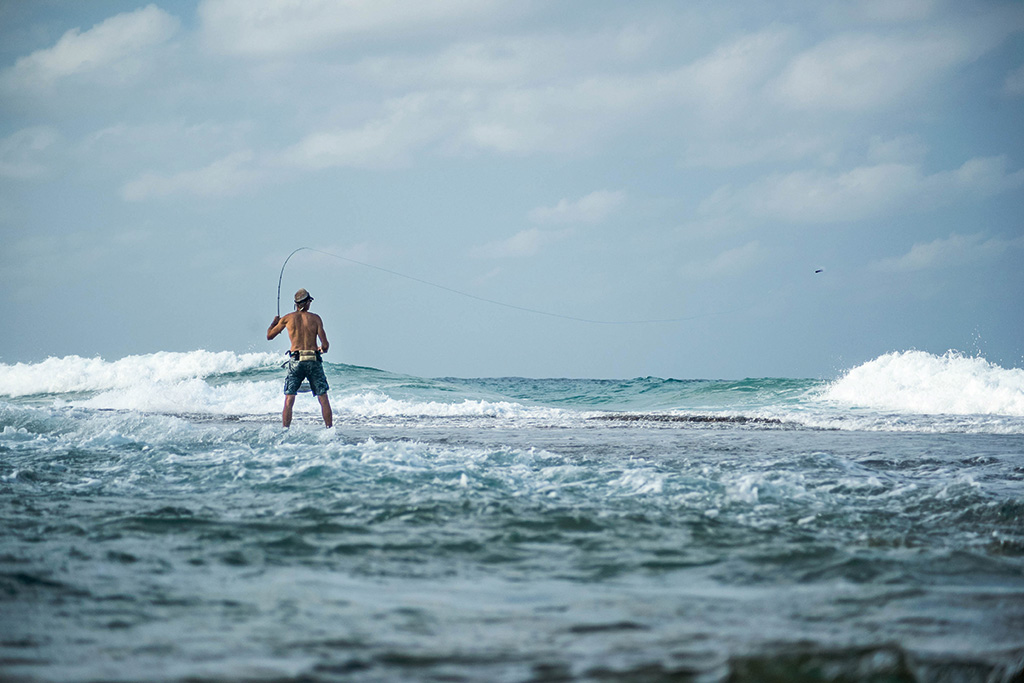
Andy Coetzee is one of the pioneers of saltwater fly-fishing in Southern Africa. Here he casts a purpose-tied baitfish pattern over the drop-off at Old Rocktail Bay, targeting giant kingfish.
For saltwater fly-fishers, not all target fish are equal. Importance is measured in strength, catch difficulty and location, among other factors. The giant trevallys (Caranx ignoblis), or GTs, of far-northern KwaZulu-Natal tick all the boxes and then some. To bring a good-sized Maputaland GT to hand, without having to stamp your passport, is holy grail stuff, the tales of which are whispered in hushed tones and linked to names like the late, great Paul Weingartz, Arno van der Nest and Ben Pretorius. The 100 Club is a very official, unofficial list of all those who have caught regulation-sized GTs on a fly rod in South Africa. That’s where I wanted my name.
I also wanted an epic battle tale to tell for The Mission Fly magazine, who had instigated this, er, mission. But really, as a Geet virgin (‘Geet’ is the colloquial term for a GT and what you use in the company of fly-fishers who know), I would be well content to catch-and-release a specimen of any size on this trip. But first, we had to get to them. By fatbike…
It was that in-between time of the morning around Kosi Bay when you aren’t sure whether or not to turn off your headlamp and gamble that your eyes will adjust to the ambient light for navigation. Up ahead the legendary fly-fisher, Andy Coetzee, was disappearing into the predawn. Andy’s four-inch broad fatbike tracks were intermittently tread-clear and faint, as the pushing tide sent licks of warm Indian Ocean up the sloping beach.
His track ran straight, showing just how efficiently he was making the most of the tricky side-camber gradient. No roller-coasting for the old salt.
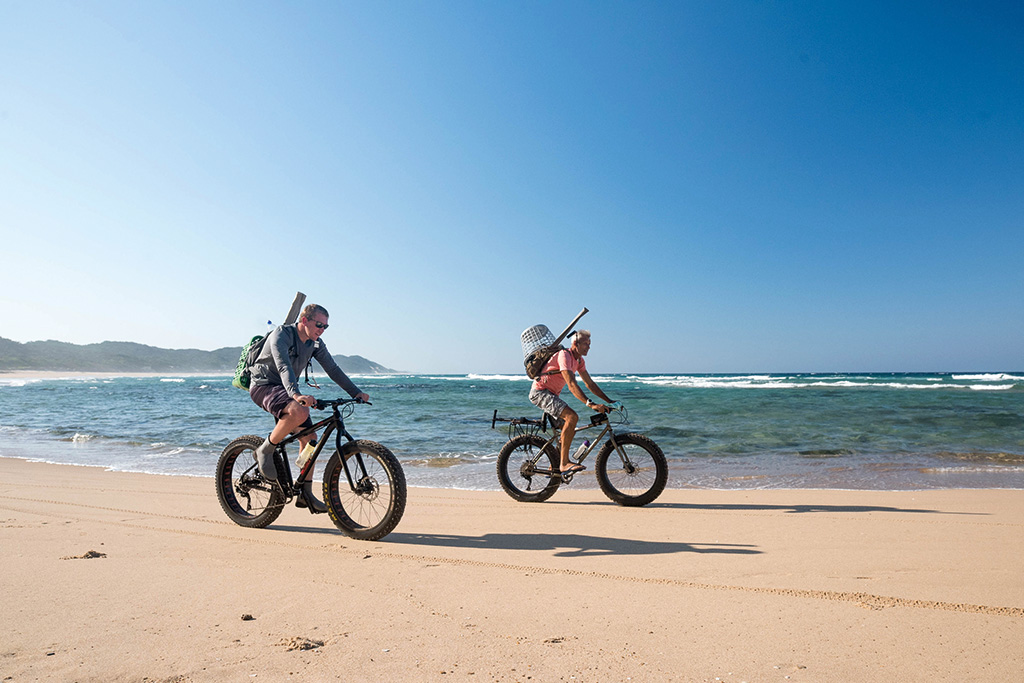
Wikus van der Walt and Andy Coetzee racing the tide – fat tyres make Maputaland’s beaches doable on a bike.
My track, on the other hand, went this way and that, as I tried to trace the hard bits of sand where the tongues of the shorebreak had retreated. Pedal. Pedal. Crank up the slope. Freewheel on the slight descent. Suck air. Repeat.
I’m something of a lapsed cyclist (two Cape Epics, a couple of fast-ish Double Centuries and a handful of ‘Arguses’ notwithstanding), and in bike-riding terms, my inefficiency was downright embarrassing. But there was no one around to judge and getting to ride a bike on a deserted beach at dawn, en route to a fishing spot, should have been an exhilarating experience.
Some lung-busting minutes later I rounded the bay to where Andy was already rigging an ageing 12-weight Loomis fly rod. The only thing fat about Andy is his bike. There’s not an ounce of lard on the 60-plus-year-old’s 1,9-metre frame. Years ago – along with his good mate Tommo – he famously ‘fished himself single’ (Fly Fishing Yourself Single is a must-read, Amazon).
He rides often and far, leading backcountry mountain-biking tours on the Wild Coast and in Lesotho and Mozambique. Once, just for fun, he and his twin brother rode their fatbikes 500 kilometres from Pomene to Bilene. On this particular day, though, our fatties had carried us from our very agreeable lodgings at Gugulesizwe to Old Rocktail Bay, a spot which on more modern maps is marked De Wet’s Baai (to distinguish it from ‘new’ Rocktail Bay). We were using the bikes to access fishing spots which would otherwise require a lengthy foot-slog through the sand. Back in the day, the old rock-n-surf manne would’ve driven there in their Cruisers.
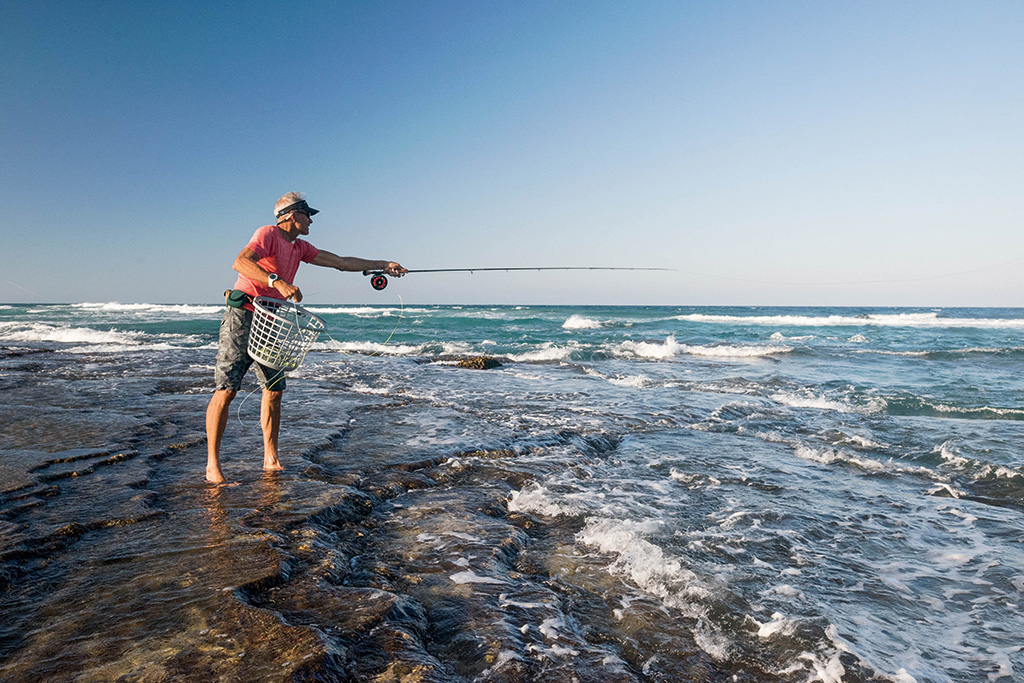
Fly-fishers use line baskets to ease casting and protect their lines from getting snagged on the reef. You can go hi-tech but Andy favours a good old laundry basket.
Just a degree or three colder than the sea, the air was heady with that very particular musty brine you encounter only on a tropical reef at dawn. ‘In my death file,’ Andy mused, ‘it says my ashes get scattered right here, on a spring tide, always at 4.30 in the afternoon.’
With that, Andy flung a worn kit belt around his waist, strapped on a laundry basket (he forgoes the commercial, specifically created line trays to manage his fly-line in the surf zone) and set off with a bow-legged gait towards the reef edge, to whip his south-paw (left-handed) casts out at those hallowed GT brutes. This was our third session of the trip. The previous day had seen us fish a chunk of hours at both dawn and dusk without reward.
It was shoulder season for ignobilis, to be fair, but given this opportunity to ride bikes and fish with a legend, I wasn’t much bothered with those kind of details in the lead-up to the trip. Instead, I optimistically tied way too many flies, read everything I could and spent countless hours fussing over gear and tackle packing lists, adopting a ‘f*** the forecast’ mantra. But two (very) fishless sessions can test the cheer of the most highly vibrating fishing soul.
‘This place can easily give you mombakkies,’ Andy had said the previous night in what I hoped was a reverse-psychology ploy to buoy enthusiasm levels. It was needed because after our party of three rods – Wikus van der Walt made up the third – had thrown a whole spectrum of flies over two long sessions, we were still mombakkies (the colloquial Afrikaans expression for ‘blank’).
‘It’s hard fishing here,’ Andy commiserated after our first day. ‘In the surf zone you might fish for two or three days and not get a pull. If you cut your teeth in the surf here, you’re going to know how many beans make five.’ With that out the way, he’d got philosophical about the state of our oceans. ‘If we were here 15 years ago we would’ve had at least two big pulls and probably missed a couple. With the same conditions at the same time of year,’ he added. ‘A lot has changed in recent years. The ocean is empty. Now we don’t see any baitfish, we don’t see any shoals of mullet. It’s like a desert.’
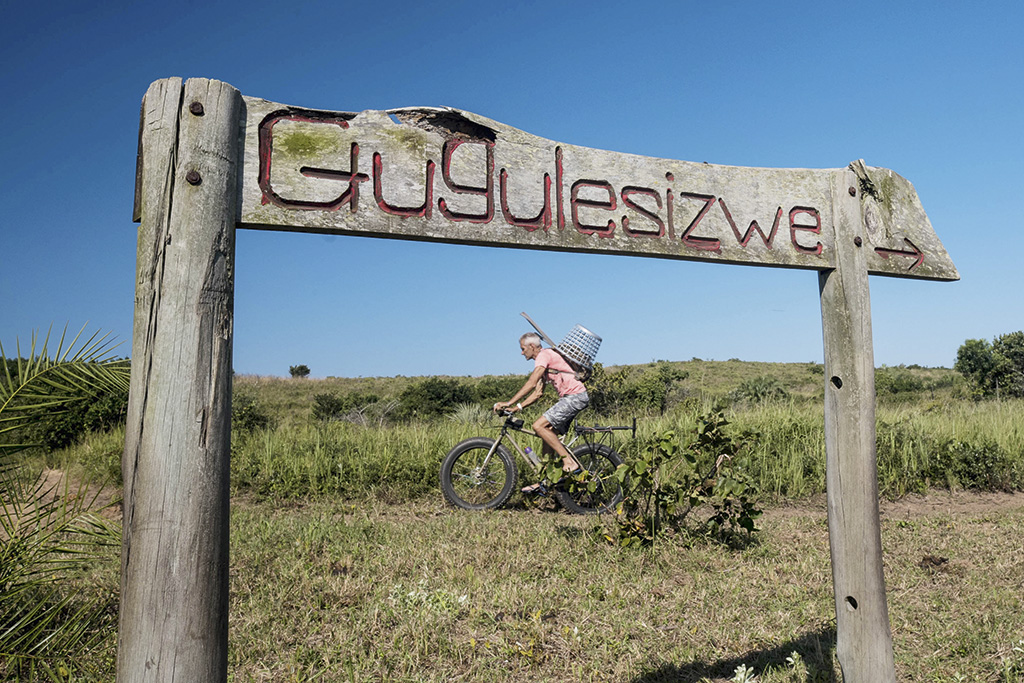
Using fatbikes to access former 4×4 fishing haunts is a ‘best-of-both-worlds’ type of thing.
Andy would know. He first landed in Maputaland as a parabat during the Mozambican civil war. He returned in the 1980s, armed with an honours degree in nature conservation and a broad encyclopaedic knowledge of local flora and fauna. Working in association with Rhodes University’s Ichthyology Department, his brief was to improve fishing methods by combining Western techniques with local knowledge. He also did turtle research and even helped to establish commercial cashew plantations. These days, between fishing and guiding fatbike tours, this passionate free diver chases monster fish for video productions on various international networks – most recently The Smithsonian Channel.
Right then, I needed to snap out of the reverie of the previous night’s philosophising and start tackling up. Instead of the 12-weight fly rod (you’d typically use a three-weight for trout and a five-weight for yellowfish in the Vaal River) I’d thrown most of the previous day, I opted for a nine-weight and an intermediate line which sits just under the surface and would be better into the wind and shorebreak.
I was just wandering towards the drop-off when Wikus trudged into frame. A lack of cycling shorts and chafe cream had seen him opt for walking the last beach bit. He tied on a small Crazy Charlie fly (to imitate small crustaceans) and hit up a rocky outcrop a little way down the beach. Within minutes he landed a small wave garrick, safely released. The mombakkies was broken.
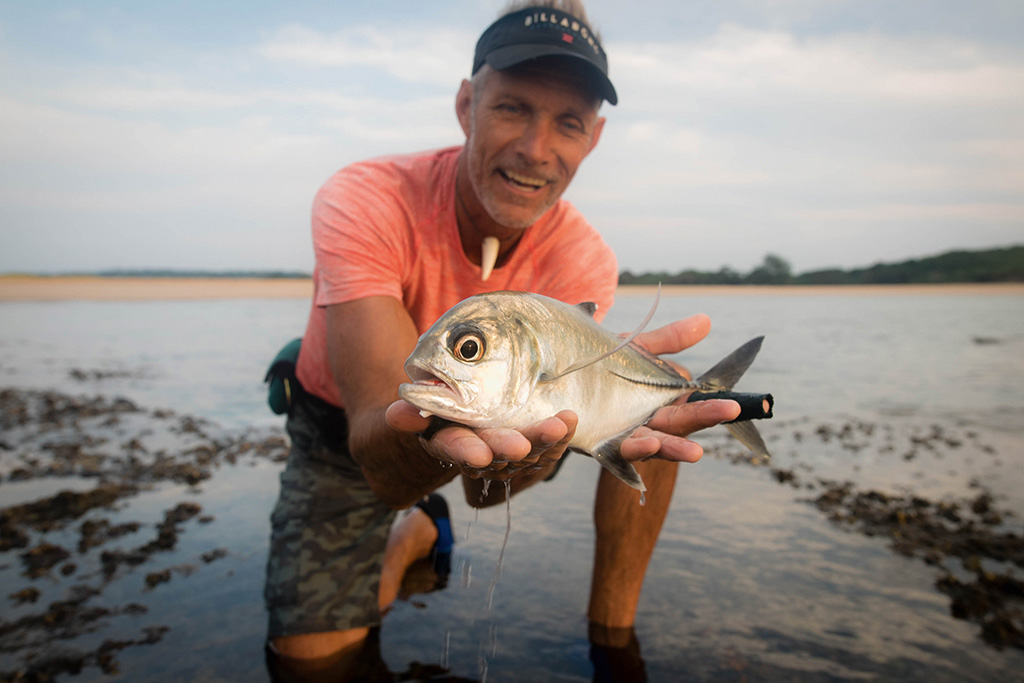
A big-eye kingfish – safely released – was small consolation.
Ahead lay two more sessions in the immediate area and then Kosi Bay Mouth further north. During the days that followed we all eventually got among the smaller fish (‘rats’), keeping entertained with wave garrick as well as big-eye and yellow-spot kingfish. But not getting a Geet, a small one even, turned this into a Yeti mission of sorts. There were plenty of signs but no actual sightings or evidence. The only option would be a return trip. Next year March, hey Andy?
Do It On A Fatbike
A fatbike is an off-road bicycle with oversized tyres (four- to five-inch) so that it can traverse otherwise cycling-unfriendly terrain such as sand, snow or mud. Detour Trails runs a range of bespoke fatbike excursions on the Wild Coast, up to Mozambique and into Lesotho and Zimbabwe, but will create any adventure according to your wishes. And they supply the bikes. Tailor-made fatbiking and fly-fishing trips in Maputaland are one of their more niche and specialist offerings, from R15, 000 all-inclusive for six nights.
There’s also a three-night Bike & Battle across the battlefields of KZN, or a slow pedal up the beaches of Mozambique’s Machangulo Peninsula, staying in luxury accommodation while diving and fishing with experienced guides, from R45 ,000 per person. detourtrails.co.za
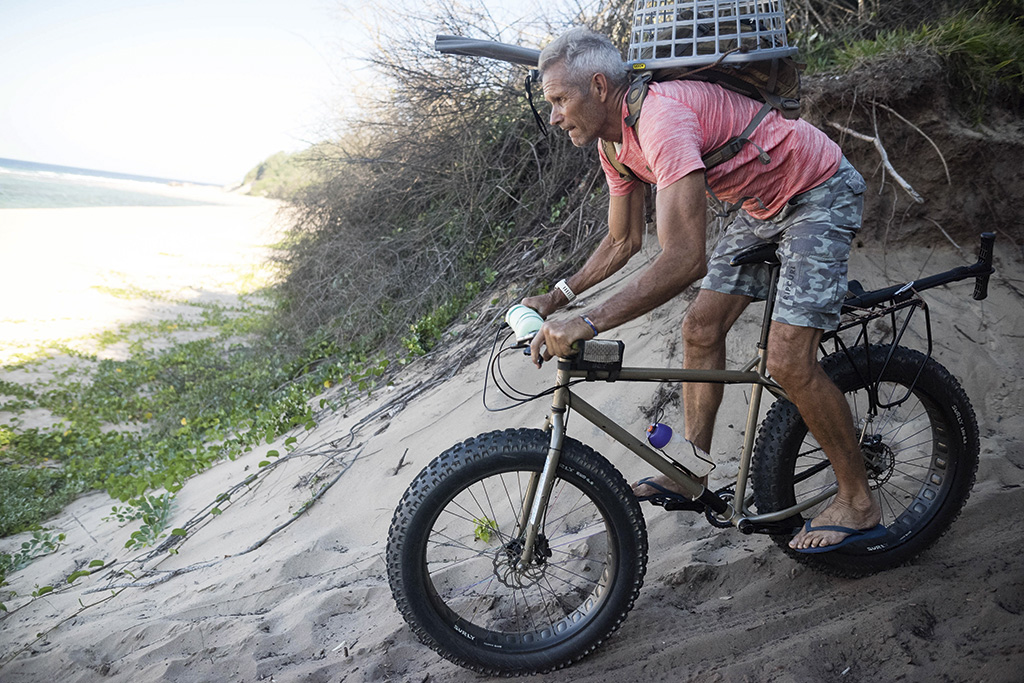
Plan Your Trip
Getting There
From Joburg Take the N2 through Pongola towards Mkuze; 10km before Mkuze turn left to Jozini and cross the dam wall. After 45km you reach a T-junction – turn right to Kwangwanase and proceed for another 47km past Tembe Elephant Park to the Kosi Bay park entrance gate.
From Durban Take the N2 north, turn off at Hluhluwe and drive through town until the last traffic circle. Follow the signs to Mbazwana/Sodwana Bay. After 87km, bypass Mbazwane on your right and go straight through the circles, following the signs to Coastal Forest Reserve; 46km later, turn right at the circle, at the KwaNgwanase/Kosi Bay sign.
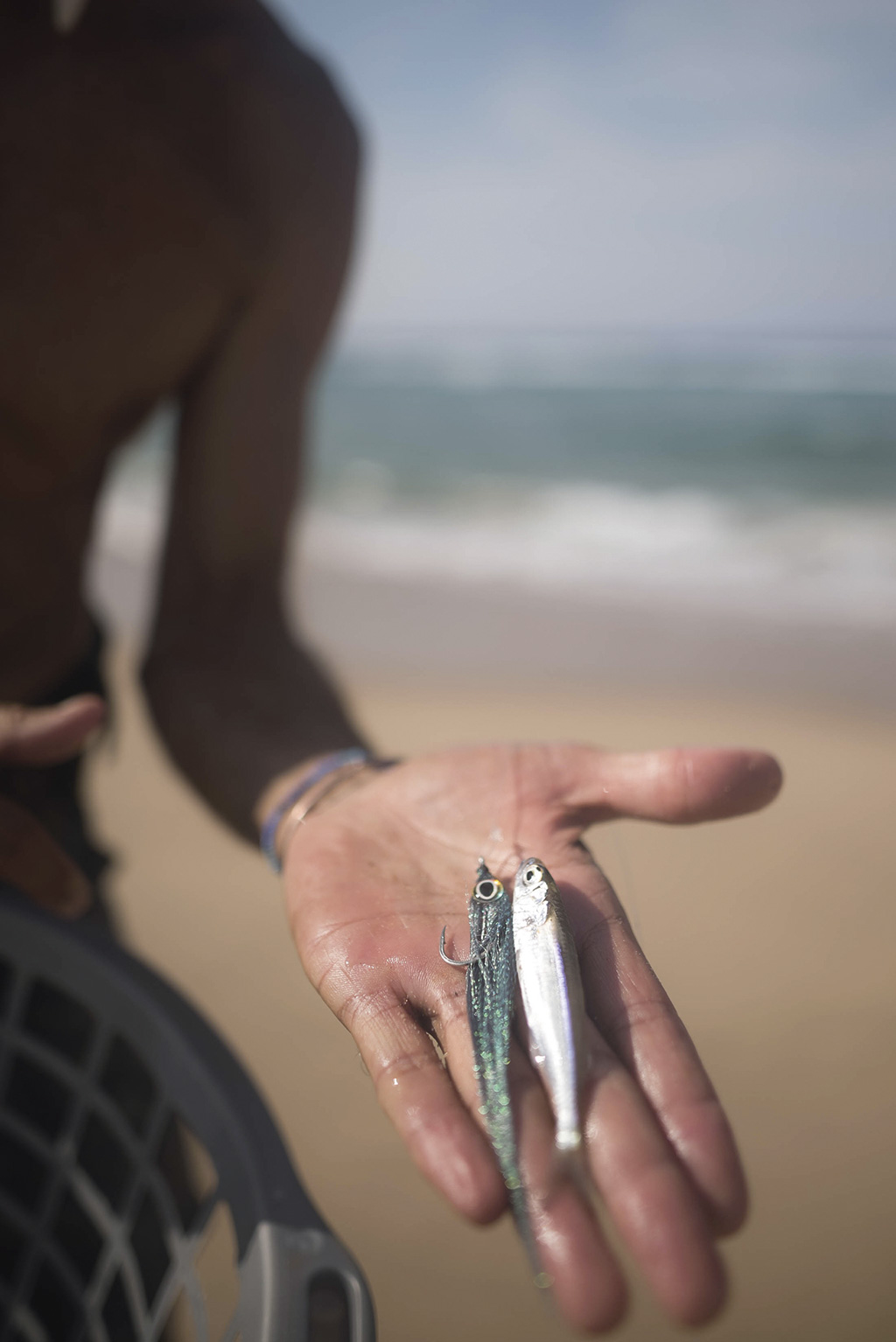
‘Match the hatch’ – a baitfish fly expertly tied to imitate the local fry and hopefully fool
a big game fish.
When To Go
The ideal time to catch kingfish species on fly tackle is mid- to late summer.
Need To Know
Fishers need a valid saltwater fishing licence (R76), available from all coastal post offices. Entry to the Kosi Bay Mouth section of iSimangaliso Wetland Park (6am to 6pm) is by permit only; buy one at Utshwayelo Lodge for R60 pp, vehicle R56. Permits for Black Rock, the Kosi Lakes and night fishing must be obtained from the Ezemvelo Kosi Bay camp office. 035-592-0236. If you’re camping or self-catering, bring all your food. Basic supplies are available in Manguzi, 24km from Kosi Bay Mouth.

Stay Here
Utshwayelo Kosi Mouth Lodge & Camp in the north-eastern corner of SA is an ideal launch pad to fish the area. It’s 100m from the Kosi Bay Mouth entrance gate and has a variety of accommodation and catering options, including an honesty bar and pool. Camping from R220 per person, R800 for a furnished tent or R1 ,150 for a two-sleeper chalet. Meals from R120 for breakfast to R460 full board. 082-909-3113, kosibay.info
Gugulesizwe Research Camp gets its name from the scientists for whom it was originally built. It’s an exclusive-use hideaway a short stroll from (and run by) Gugulesizwe Dive Camp, with four canvas and thatch rooms, a well-equipped kitchen, open-plan chill area and pool. From R8, 000 (sleeps eight), plus full board for R450 per person extra. The Dive Camp is from R950 per person sharing, self-catering. 064-536-3175, maputalandtravel.co.za
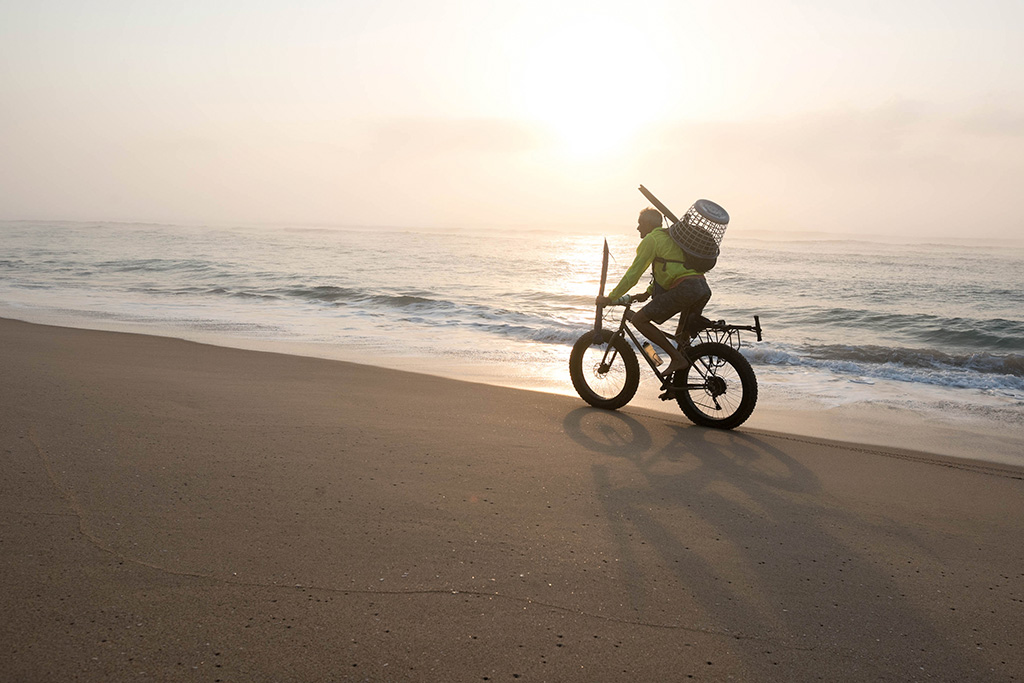
Guide Andy Coetzee is fluent in the local Tonga tongue and has an in-depth understanding of the traditions and mythologies of the Maputaland area.
Words and photographs: by Jazz Kuschke
You may also like
Related Posts
Whether you’re in a two-person hiking tent eye-balling the peaks or a full caravan in...
read more
Gabrielle Jacobs forsakes the Breede Valley’s winelands for some Cape nature at Vrolijkheid Nature Reserve,15km...
read more
A new guided hike in the Western Cape known as the 16 Mile Beach Challenge...
read more